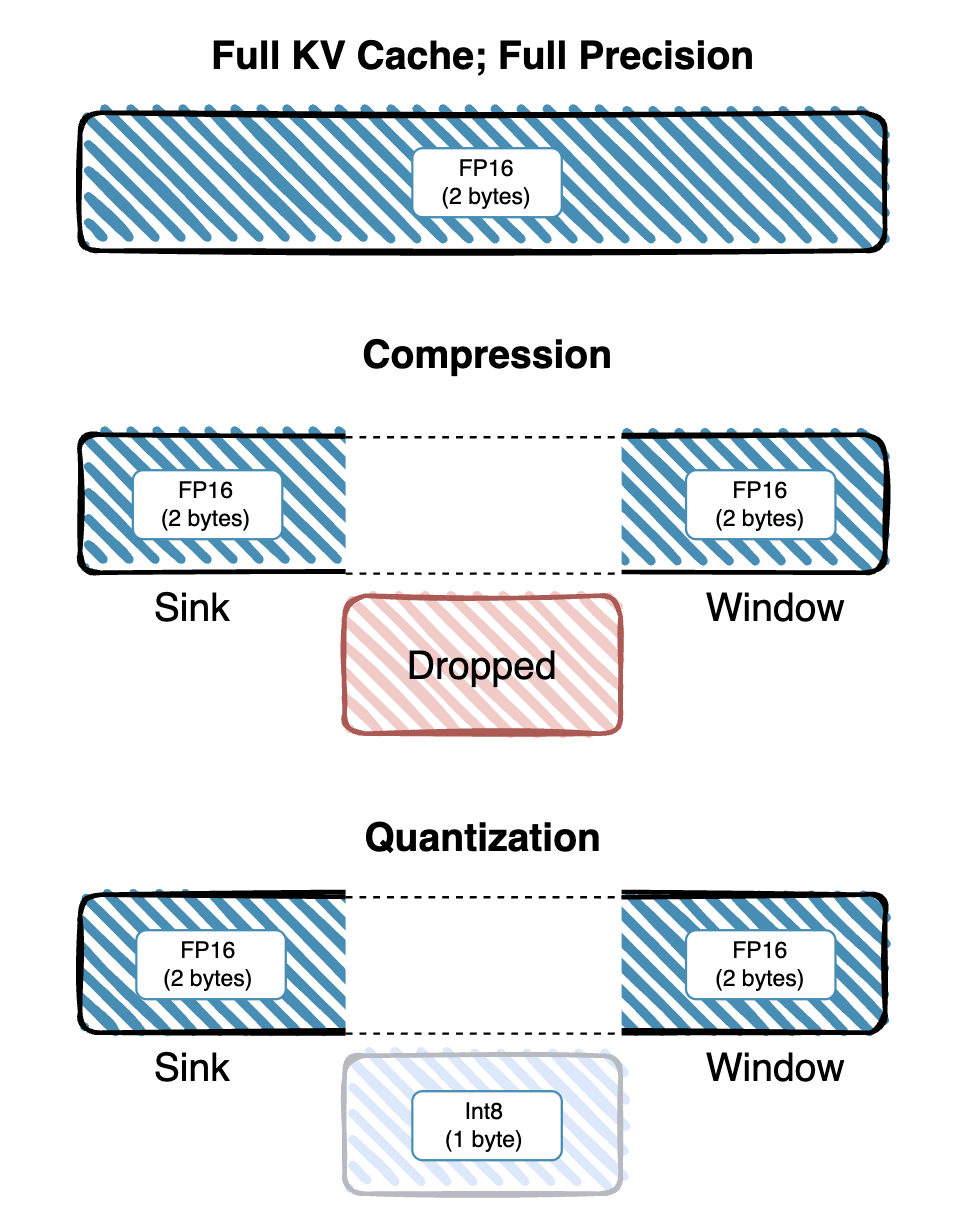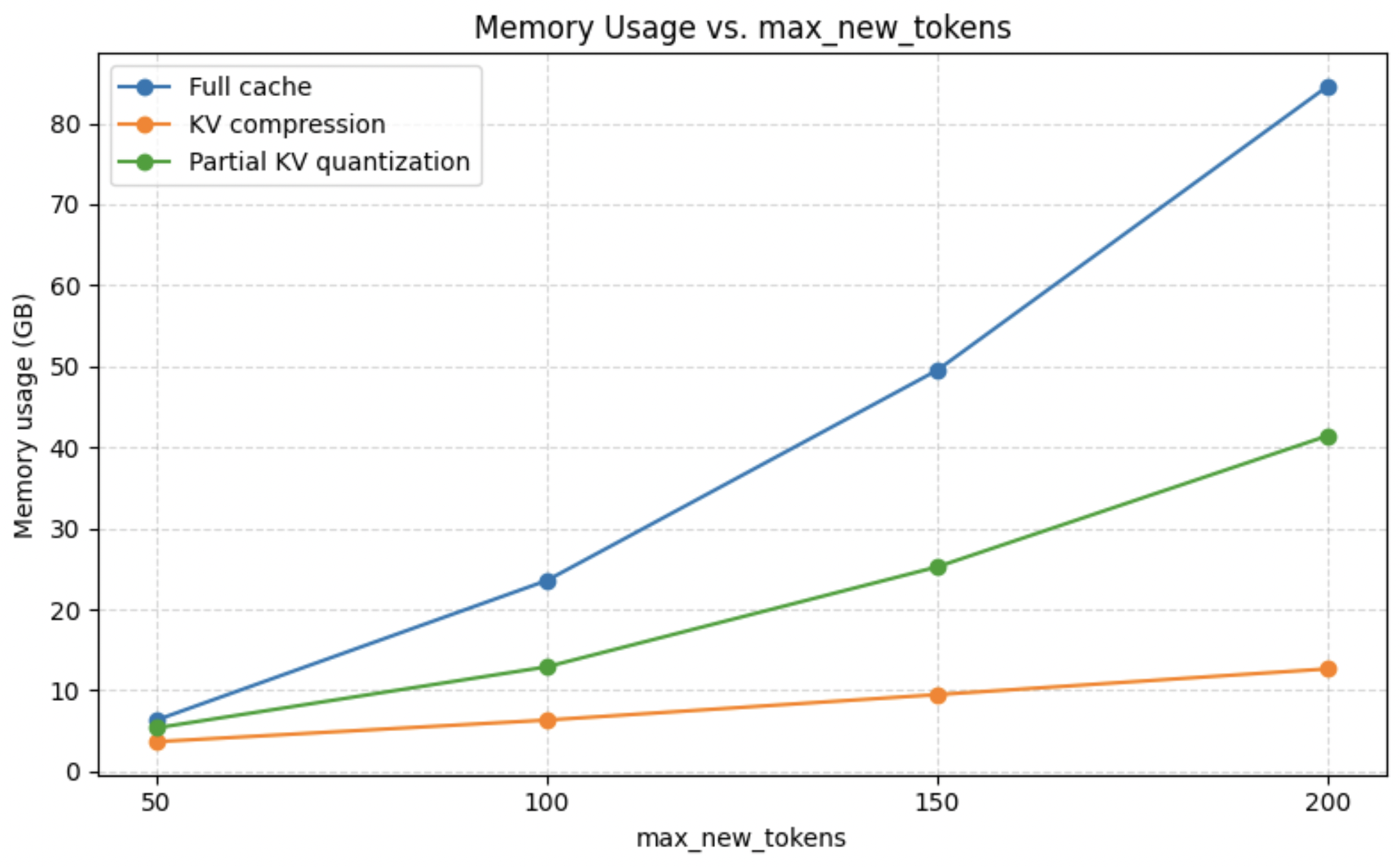Selective KV Quantization
Don't Drop It, Compress It - Reducing LLM KV cache memory usage by ~2x with minimal accuracy loss
Don’t Drop It, Compress It: Selective KV Quantization
Modern large language models (LLMs) rely on a Key–Value (KV) cache to store intermediate representations for long‐context generation, but this cache can consume 90%+ of GPU memory as sequence length grows. Existing solutions either drop old tokens (sliding window, attention sinks) or uniformly compress all tokens, often trading off accuracy for memory.

Selective KV Quantization bridges this gap by:
- Preserving “sink” (initial prompt) and a sliding “window” of recent tokens in full precision (FP16)
- Aggressively quantizing older tokens to int8
- Dequantizing on‐the‐fly only when needed for attention
This hybrid strategy delivers up to 2× memory savings with no increase in perplexity (5.56) and only a minor drop in ROUGE-L (0.2073 → 0.1709).
Key Results
| Caching Strategy | Perplexity | ROUGE-L | Memory Reduction |
|---|---|---|---|
| Full Cache | 5.56 | 0.2073 | Baseline |
| Compressed Cache | 132.08 | 0.1030 | ~4× |
| Quantized Cache | 5.56 | 0.1709 | ~2× |

Technical Highlights
- Memory Efficiency: KV cache accounts for over 90% of total GPU memory usage
- Accuracy Preservation: Maintains full-cache perplexity while achieving significant memory savings
- Selective Strategy: Smart preservation of important tokens (sink + sliding window) in full precision
- On-the-fly Processing: Efficient dequantization only when needed for attention computation
Implementation
The project includes comprehensive evaluation scripts, PyTorch profiler integration, and support for various compression strategies. The codebase is built on top of PyTorch and optimized for CUDA-enabled GPUs.
GitHub Repository: anushrisuresh/kv-quantization
Technologies: PyTorch, CUDA, Python, Quantization, Large Language Models